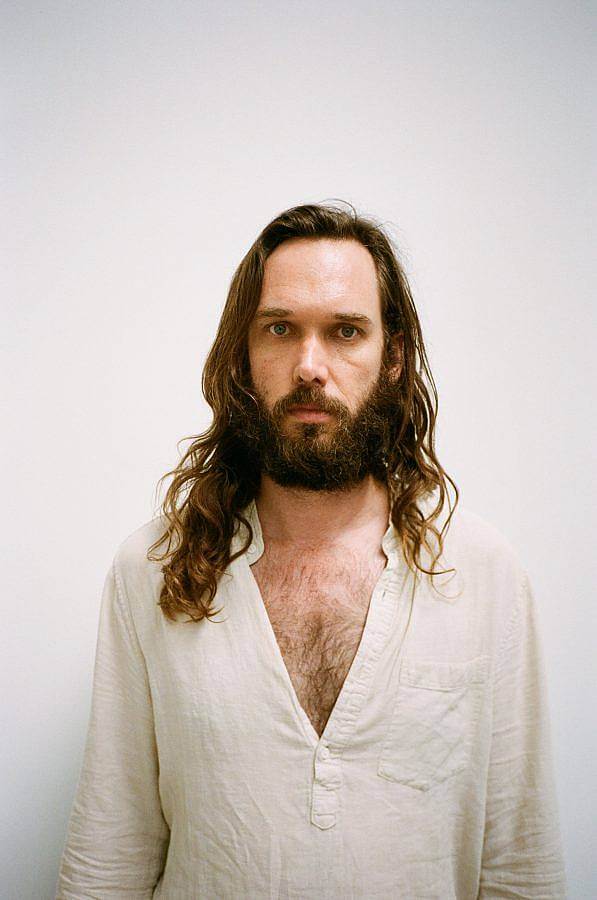Can you tell us a bit about yourself and what you do?
I’m a musician and an artist. I tour with a number of different bands and and produce records for other artists from time to time. When I’m not on the road or in the recording studio, I am able to focus more on my art practice. I work with metal, wood, stone and ink on paper; trying to build a world where sound and image can intersect and influence each other. In the last few years, I’ve been making lots of sculptures that also produce sound, trying to develop a musical and visual vocabulary with these instruments. Improvisation is almost always a part of what I do.
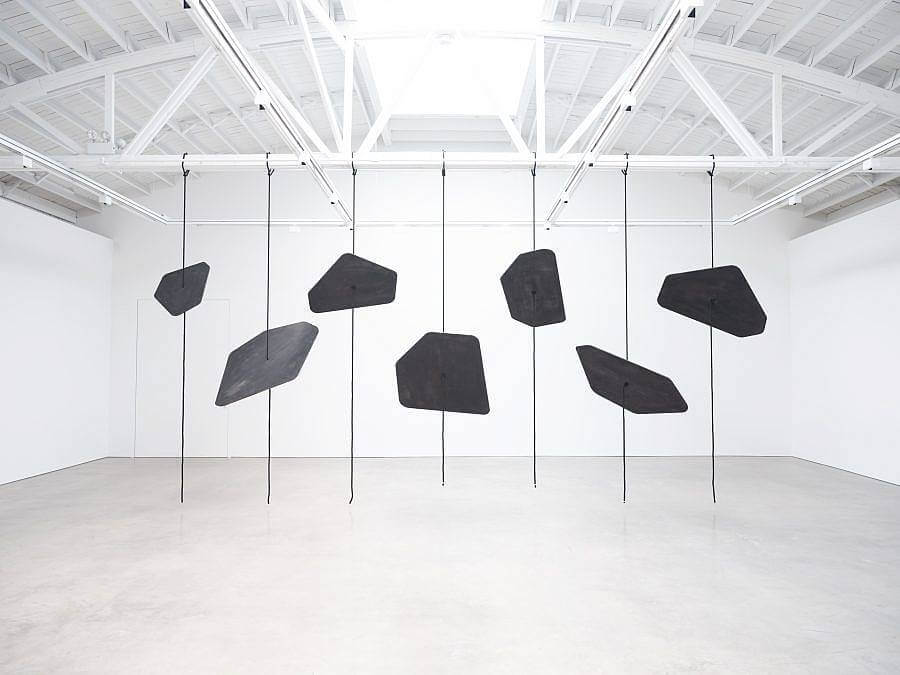
How did your interest in art begin?
I grew up around artists. My mother was a painter, writer, and an artist in everything that she did. Riva Lehrer and Tim Lowly were both friends and collaborators of her’s. My favorite painter when I was a small child was Ed Paschke. Something about the vibrant colors appealed to me and I thought it was “for kids.” As a kid I would create these elaborate geometric drawings, and I have a hard time imagining the patience and discipline that 7-year-old me must have had to make them. I came across some of these drawings earlier in the pandemic and I’ve been trying to emulate the mark-making styles in some of my new bells.

What are some things influencing your work right now?
I’ve been working with wood this year, mostly white oak. I’m trying to learn some traditional sculpture techniques and doing direct carving. I just ordered a lathe from Canada and I’m excited to start turning forms. I’ve also been very interested in Cacti since moving to LA a few years back. They are such incredible survivors and the things they do to propagate are wild. They also create such beautiful forms. I love the amorphous and bulbous ridges of Lophocereus schotii, the deep purple of Uebelmannia pectinifera, and the funky spikes of Euphorbia ferox. It’s such a fascinating expression of geometry in nature. It would be near impossible to create a form as beautiful as even the most commonplace cacti.
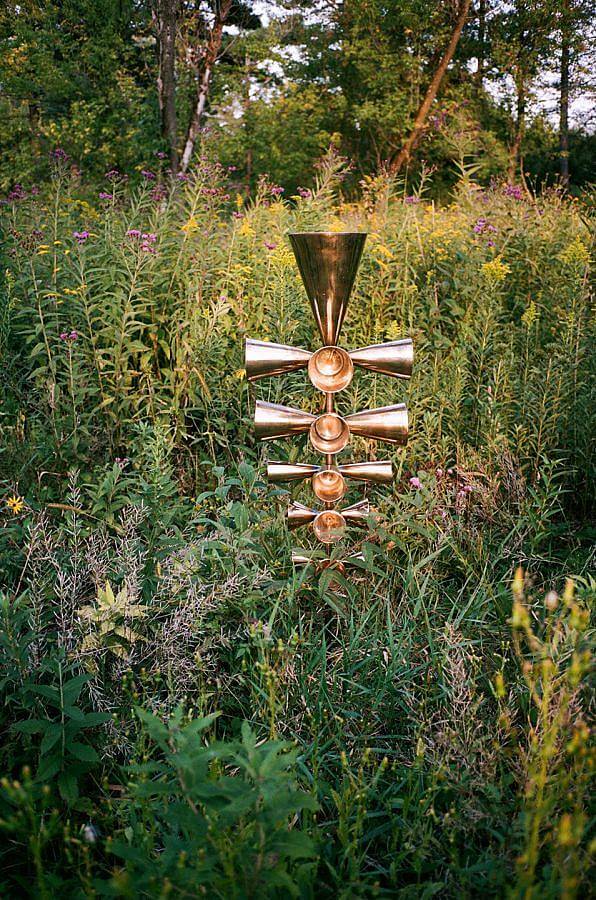
Can you tell us about the process of making your Bell Trees and Polygongs?
The Bell Trees are cast as individual bells and then welded together into their tree forms. I work with an amazing foundry here in Chicago. We sand cast most of the larger bells, and occasionally use the lost wax method for some of the more delicate pieces. They are assembled in an intuitive manner. I try to create enough pieces to play with and when I find good groupings, I try to imagine them together in a solid form. It’s basically creating a set of building blocks. The Polygongs are cut on a water-jet machine and then I do all of the edges with a hand router. They are then patinated black and finished with wax.
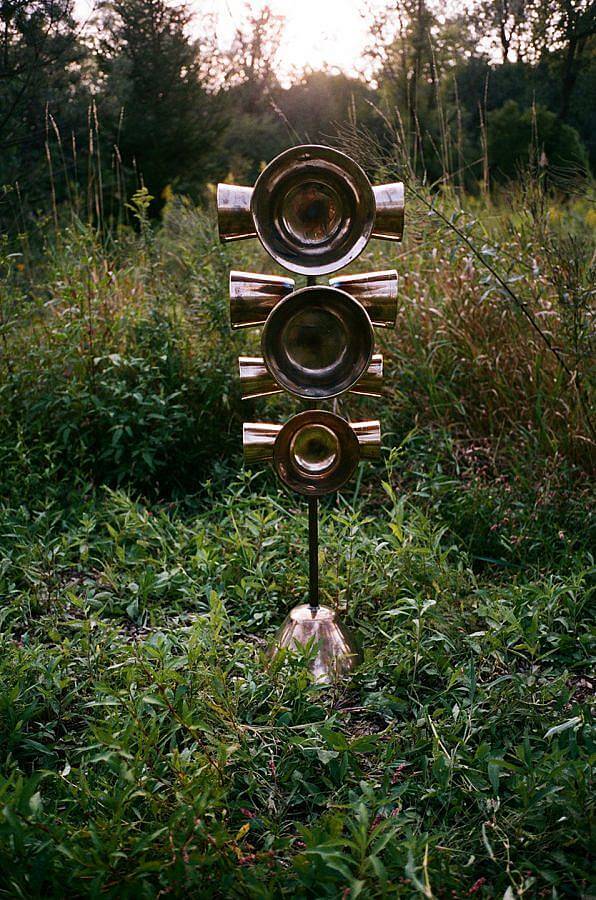
Do your material choices serve any significance in your work?
Material is such a central part of my practice. I have been using guns and bullet casings to make my Peace Bells for a number of years. There are challenges on many levels working with those materials; from procurement, to processing, to pouring the metal. I like the idea that something can be completely transformed through this alchemical process. The first attempts were really sort of dangerous. The foundry had to be evacuated for several hours because of all of the zinc gas that was released during the melting of the bullet casings.
We’ve figured out better and cleaner ways to work now and thankfully don’t have to endure such a noxious process. Additionally, the oak that I’ve been working with this year is all reclaimed. There is a fungus in Illinois right now that causes oak wilt, and we are losing a lot of White Oak. It’s sad.
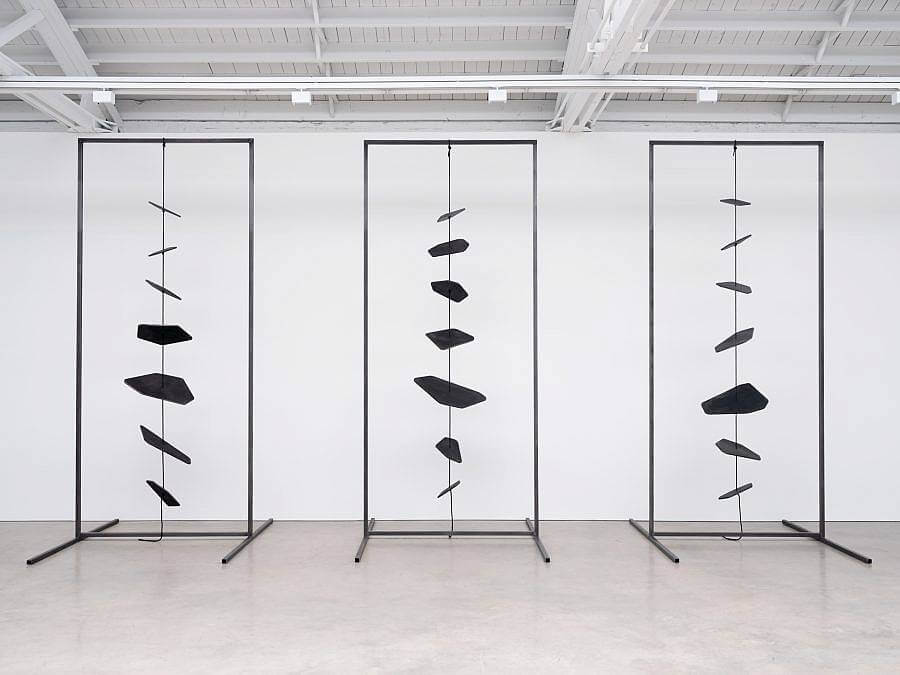
Music and sound give a viewer a bodily experience that resonates with them long after the performance has ended. What role does the viewer’s body play in your work? Is this something you consider when approaching a new piece?
I have to consider the viewer and also the performers. The hanging polygong pieces are slightly dangerous. The larger pieces are 80 pound metal plates and are spinning freely in the space. The sound they produce is incredible in close proximity, and so there is a bit of a delicate balance between keeping people safe and letting them experience the overwhelming bass frequencies that the Polygongs produce.
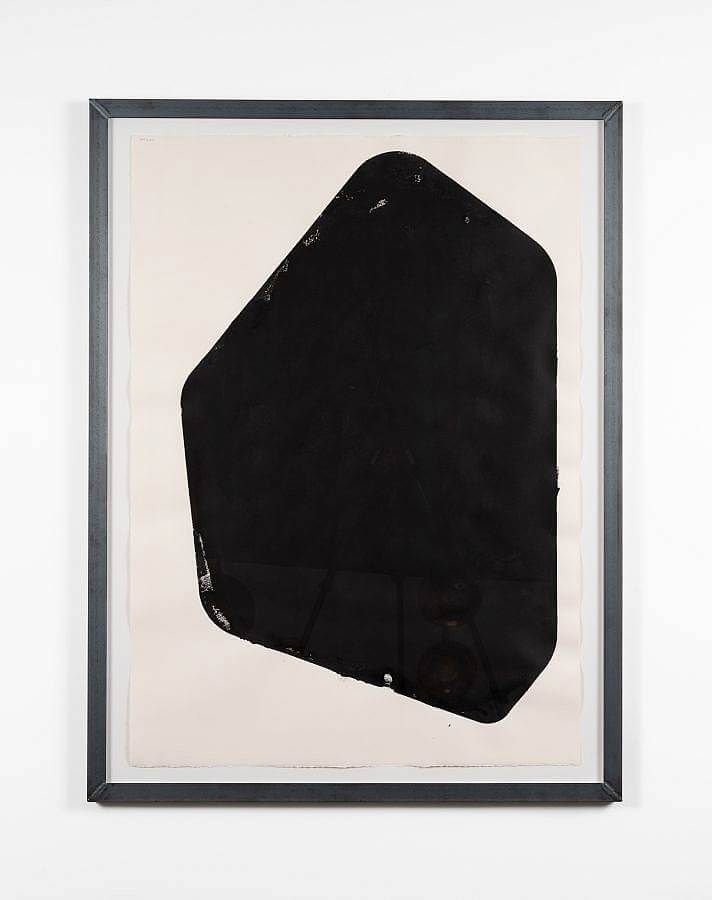
You’ve mentioned that you make your own walnut and hickory ink, what drew you to this process?
There were just hickory nuts and walnuts everywhere this year! I had been doing drawings with India ink, but walnut ink can produce some beautiful warm and rich browns. I bought a bunch of crock pots from the Goodwill and started cooking in my shed. There’s a long history of making nut-based inks, and apparently the Declaration of Independence was drafted in an oak gall ink.
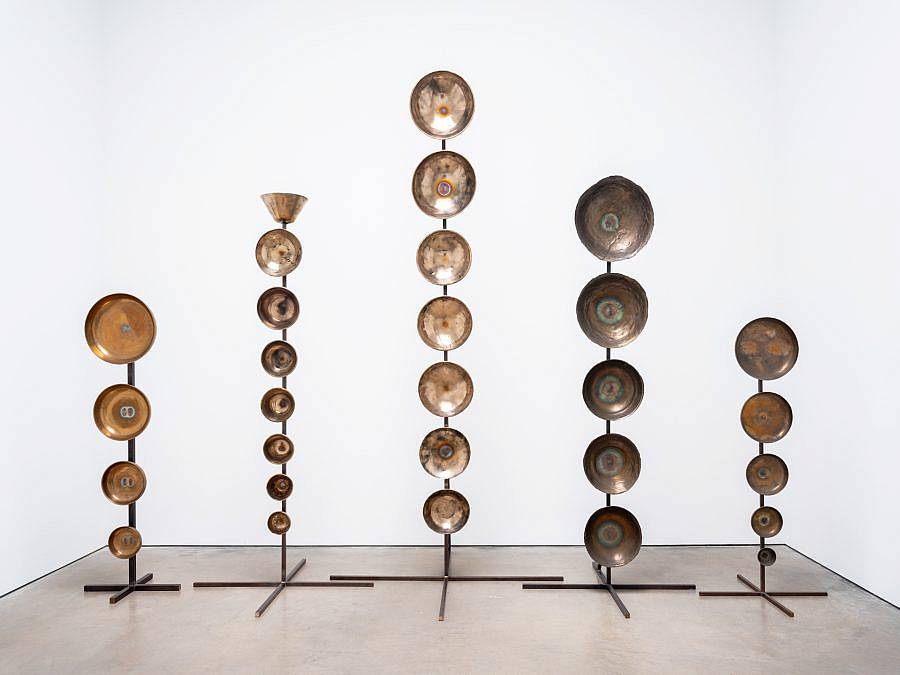
Can you tell us about the ensemble you performed and recorded with during your exhibition Resonant Body at Shane Campbell Gallery?
Erik Hall and Quin Kirchner have been longtime collaborators. We played together in the band NOMO for many years and have recently been touring together in Wild Belle. They are two of the most amazing drummers and musicians I’ve ever worked with and we have a strong collaborative dynamic. We don’t have to talk about much anymore, we can just play. Cedric Lemoyne is also an amazing bass player and friend. This was the first time he had joined us in this sort of setting. Shane also brought in his modular synthesizer during the show and we would set up and play in the space during the days when we weren’t having visitors.
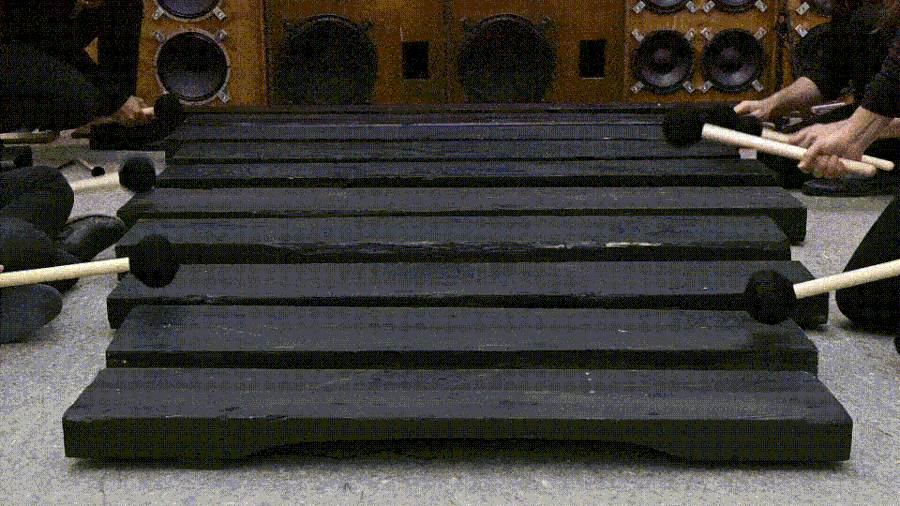
What are you reading right now?
I have ordered far more books than I can possibly read this year, but I like having a few things going at once. There are a few really great shops that I like to support like Inga books here in Chicago, Mast Books in New York, and Alias Books in LA. Right now I’m reading some of Donald Judd’s writings, Bruno Munari’s Design as Art, Wendell Berry’s Art of the Commonplace, and I just got a copy of my friend Alex Chavez’s book, “Sounds of Crossing”. Books are a nice way to let your mind travel when you are physically unable. I’m looking forward to getting back on the road and seeing some new places when things open back up. I’ve never been to Japan, and my new interest in woodworking makes me feel like a trip to study joinery should be next on my wish list.
Interview composed by Kaitlyn Albrecht.
Editing and alt-text image descriptions by Ruby Jeune Tresch.
